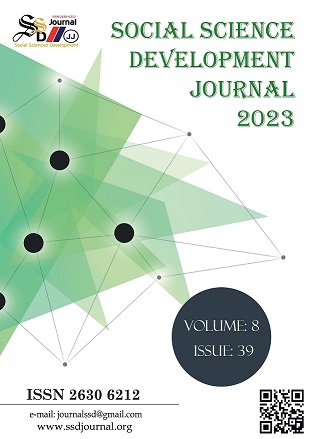CONSERVATION OF COLLECTIVE MEMORY AND ARCHITECTURAL HERITAGE UNDER THE IMPACT OF EARTHQUAKE: THE CASE OF MALATYA NEW MOSQUE
DOI:
https://doi.org/10.31567/ssd.981Keywords:
Earthquake, collective memory, conservation, Malatya, New MosqueAbstract
Natural disasters have affected and shaped human life and the built environment for centuries. One
of them, earthquake, is formed as a result of movements in the earth's crust. This natural event,
which cannot be prevented, can affect not only the area where it occurs, but also a much wider
region, depending on the size of the movement. Earthquakes, especially in areas where settlements
and populations are concentrated or close to these areas, can directly and destructively affect human
life and the built environment.
Earthquakes leave deep traces in human memory due to their negative effects. This situation also
affects the collective memory. The said effect has been seen for centuries in Anatolia, which is one
of the geographies where earthquakes are frequently experienced, as in many parts of the world.
Earthquakes that have occurred throughout history in Anatolia, which is described as an earthquake
zone, have deeply affected the collective memory from time to time with their devastating effects.
Architectural heritage, which is an important carrier of collective memory, shapes the way of life,
common values and building culture of a society with the effect of destructive earthquakes; it
enables to read the formation criteria and development/change processes of cities. The Anatolian
architectural heritage also contains rich and almost lesson data in this respect. The two devastating
earthquakes that took place in eastern Turkey on February 6, 2023, strikingly showed how the
collective memory was affected by the effects they left on the architectural heritage. In this context,
the aim of the study is to reveal the relationship between the architectural heritage, which was
heavily damaged by the earthquake, and the collective memory, and to contribute to the
conservation of the said heritage in this respect. Within the scope of the study, New Mosque and its
surroundings, which is located in Malatya, one of the Anatolian settlements most affected by the 6
February 2023 earthquakes, and which stands out with its symbolic quality in the collective
memory of the city, were discussed. When the place of the building in Malatya's collective memory,
its cultural values and its history, which was heavily affected by earthquakes, are examined, the
importance of its conservation and transfer to the future is better understood. As a result, in the study, it is aimed to strengthen the architectural heritage against natural disasters
that cannot be prevented such as earthquakes and to produce permanent / effective solutions; it has
been pointed out that the collective memory of a settlement, region and on a higher scale, the
country is of vital importance in terms of transferring it to the future and ensuring cultural
continuity.




